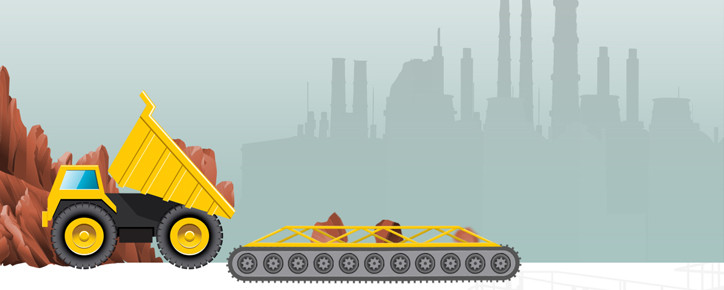 Click on the truck to view aluminium process
Click on the truck to view aluminium process
Compared to many other materials, aluminium has a lower weight, and therefore contributes to lower fuel consumption and emissions. It preserves food quality and reduces the need for building maintenance, while increasingly helping to save the energy used for cooling or heating purposes.
Aluminium production
Primary aluminium production has made significant progress when it comes to energy efficiency and reduced emissions. Modern production technology, such as that utilized in Qatalum, uses approximately 25 percent less energy than the average cell back in 1990.
Qatalum employs all the best available technologies in its processes, and has very little impact on the local environment (EIA Summary).
Emissions of greenhouse gases from modern technology, such as that used by Qatalum, are down to a minimum. Emissions of perfluorocarbons (PFCs) are less than 0.3 kg per tonne of aluminium produced, which is far below the global average.
Aluminium in use
The main end-use areas for aluminium are transportation, construction, packaging and general engineering. Aluminium in cars reduces their weight and hence fuel consumption and emissions.
Studies show that one kilogram of aluminium used in a car replaces two kilograms of heavier materials like iron or steel, reducing total emissions over the life-time of the car by 20 kg of CO2. The same applies for other vehicles such as trucks, buses, trains, etc.
Aluminium used as packaging forms a complete barrier and thus helps preserve food, drink and pharmaceutical products.
Aluminium used in buildings can reduce the volumes of energy required for cooling or heating purposes. So-called intelligent facades can reduce energy consumption by up to 50 percent. This is important as buildings, both commercial and residential, represent more than 30 percent of energy consumption in Europe, more than each of the two sectors transportation and industry.
Aluminium recycling
Almost every aluminium product can be commercially, and even profitably, recycled at the end of its useful life. When recycled, aluminium does not lose metal quality or properties. The challenge is often to recover the aluminium. This is up to the various waste collection schemes often initiated and operated by local authorities.
More than 90 percent of the aluminium in scrapped cars is recovered and recycled. The same high recycling rates have been observed for commercial buildings, where the value of aluminium scrap is clearly recognized. For aluminium beverage cans recovery and recycling rates exceed 90 percent. This is the case in several European countries. Aluminium recycling requires only five percent of the energy expended in primary aluminium production.
Recycled aluminium represents the metal source for more than one third of aluminium production globally. Demand for recycled aluminium is increasing even more strongly than that for primary aluminium. In the Aluminium life cycle and value chain, recycling is key to a sustainable aluminium future.

